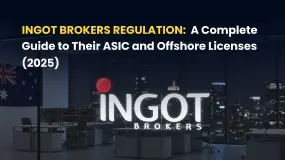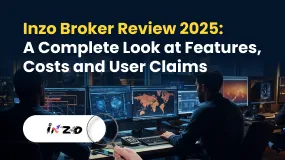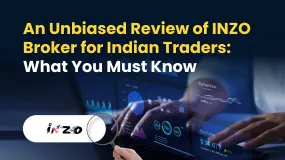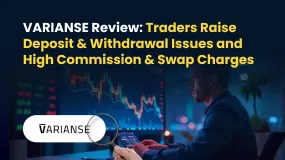简体中文
繁體中文
English
Pусский
日本語
ภาษาไทย
Tiếng Việt
Bahasa Indonesia
Español
हिन्दी
Filippiiniläinen
Français
Deutsch
Português
Türkçe
한국어
العربية
At the Edge of Chaos: Price Charts Say Niet to "Petro Ruble", For Now
Abstract:VIX Declines but Prices Still Fall
There is a growing chorus, certainly on the fringes of financial analysis at the moment, that the U.S. Dollar is in the early stages of collapsing as the world's reserve currency. This set of expectations is based on familiar themes: the long-standing and growing U.S. budget deficits, the political disarray in Washington and the current inflationary environment. Moreover, some proposing the end of the greenback are betting that the dollar will be replaced by commodity-based currencies such as the ruble, while others are saying that cryptocurrencies will be taking over as the major mode of exchange.
These are not necessarily a new set of beliefs, but they are gaining momentum in some circles due to the war in Ukraine. Specifically, the central tenet of the movement is the belief that oil will be bought and sold with rubles and yuan and, thus, the dollar will lose its petrodollar status and die.
Of course, it is plausible that this may come to pass. Yet, at this point, it's not quite evident.

Price Charts Say Niet to Petro Ruble for Now
As things stand at the moment, despite expectations to the contrary, the global financial system is still following the operating rules based on the petrodollar. Consider the following price charts, which are based on the markets responding to these three simple inflation-related events:
The Federal Reserve is in the midst of raising interest rates
There are supply chain snags everywhere
The Russian invasion of Ukraine is adding high levels of unpredictability to everything
First, the Fed's rate hike cycle has prompted a cycle of aggressive selling in the U.S. Treasury bond market. Note the new highs for the cycle on the U.S. Ten Year Note yield (TNX).
Next, note that the U.S. Dollar Index (USD) is rising in nearly perfect synchronicity with TNX. That's because higher interest rates in any particular country tend to make that country's currency more attractive than others.
A look at Bitcoin (BTC) versus the U.S. Dollar shows the cryptocurrency pulling back just as key proponents are talking it up. Enough said there. I'm not against BTC, I'm just pointing out that its price will fluctuate and that it's not showing signs at the moment of becoming the reserve currency.
Meanwhile, the ruble took a huge hit upon Russia's invasion of Ukraine, especially against the dollar. But recent trading action has brought the ruble and the dollar's exchange rate back to where it was before the war. So, at this point, the market is saying that it's watching to see what happens, but that there is no real reason to change the exchange rate between the two beyond where it was prior to the war.
Finally, note that the rise in TNX and the U.S. Dollar have led to a pullback in oil prices (WTIC). That's because a strong dollar will buy more oil, even from Russia, which has been selling its crude at a discount to some of its buyers, such as China.
In effect, we're seeing is a market responding to higher interest rates in the midst of a highly volatile geopolitical environment. And, so far, there are no signs of malfunctions in the relationships between the asset classes. At the same time, the bond market may have come too far too fast. Moreover, the huge increase in bond yields will likely have a negative effects on the U.S economy, especially the housing sector and in the ease of obtaining credit for companies and individuals. And of course, when a certain point in that trend is reached, we will probably see a slowing economy.
Disclaimer:
The views in this article only represent the author's personal views, and do not constitute investment advice on this platform. This platform does not guarantee the accuracy, completeness and timeliness of the information in the article, and will not be liable for any loss caused by the use of or reliance on the information in the article.
Read more

INGOT Brokers Regulation 2025: ASIC vs Offshore License - What Traders Must Know
Explore INGOT Brokers regulation in 2025: Compare their ASIC and Seychelles FSA licenses, understand trader protection levels, and learn about potential risks in this detailed guide.

Inzo Broker Review 2025: A Complete Look at Features, Costs and User Claims
Inzo Broker presents itself as a modern forex and CFD broker, started in 2021 and registered in Saint Vincent and the Grenadines. At first glance, it offers an attractive package for traders: access to the popular MetaTrader 5 (MT5) and cTrader platforms, different types of accounts for various budget levels, and a wide selection of assets to trade. These features are made to attract both new and experienced traders. However, a closer look shows a big difference between these advertised benefits and the real risks. The broker works under an offshore regulatory system, which gives limited protection to investors. More importantly, Inzo has collected many serious user complaints, especially about withdrawing funds and changing trading conditions unfairly. This mix of weak oversight and serious user claims creates a high-risk situation that potential clients must carefully think about. This review will break down these parts to give a clear, fact-based view.

An Unbiased Review of INZO Broker for Indian Traders: What You Must Know
INZO is a fairly new company in the online trading world. It started in 2021 and is registered in Saint Vincent and the Grenadines. Traders in India and around the world have noticed this broker because it offers access to popular trading platforms such as MetaTrader 5 (MT5) and cTrader. It also lets you trade many different things, such as foreign currencies, stocks, and digital currencies. The broker tries to be easy to use with features such as a low minimum deposit, which can be appealing to new traders. However, when you look more closely, the situation becomes more complicated. INZO operates as an offshore-regulated company, which brings certain risks that every trader needs to understand. Also, user feedback is very mixed - there are many serious complaints alongside some positive experiences. Read on this in-depth review of the broker.

VARIANSE Review: Traders Raise Deposit & Withdrawal Issues and High Commission & Swap Charges
Are you losing both while depositing and withdrawing your capital at VARIANSE? Does the broker give the currency conversion rate excuse for this? Have you been trapped with spreads charged higher than promised? Do you bear steep commission and swap charges at this broker? Traders frequently report these trading issues online. In today’s VARIANSE broker review, we have shared some trading complaints that have grabbed everyone’s attention. Take a look.
WikiFX Broker
Latest News
Consob Targets Political Deepfake “Clone Sites” and Unlicensed Platforms in Latest Enforcement Round
WikiEXPO Global Expert Interviews: Gustavo Antonio Montero: ESG in Finance
Global Guide to Finding Forex IBs/Brokers — Share Your Pick and Win Big!
Trump tariffs are helping drive U.S. beef prices to new highs
Mitrade Arabic Platform Targets MENA Gold Trading Boom
Israeli Arrested in Rome Over €50M Forex Scam
Scam Alert: GINKGO-my.com is Draining Millions from Malaysians!
New FCA Consumer Alert 2025: Important Warning for All Consumers
EmiraX Markets Withdrawal Issues Exposed
Trading Pro Review: Scam Broker Exposed
Currency Calculator



